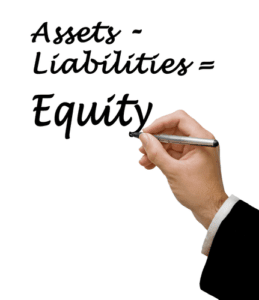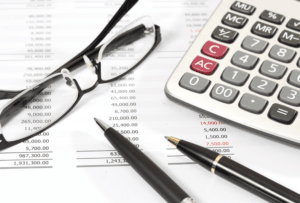Double Declining Balance Depreciation Method
Check out our replica watches selection for the very best in unique or custom, handmade pieces from our watches shops.

Both methods reduce depreciation expense over time, but DDB does so more rapidly. AI-powered accounting software can significantly streamline these depreciation calculations. By automating the complex calculations required for methods like DDB, AI ensures accuracy and saves valuable time. These tools can quickly adjust book values, generate detailed financial reports, and adapt to various depreciation methods as needed.

Step 3: Calculate the double declining depreciation rate
Let’s dive into the story behind each visualization and explore why these visual representations are crucial in understanding our customers. With Deksera CRM you can manage contact and deal management, sales pipelines, email campaigns, customer support, etc. You can generate leads for your business by creating email campaigns and view performance with detailed analytics on open rates and click-through rates (CTR).
- The time factor for any accounting period that falls between the first and the last period is 1 because the asset will be available for the entire period and, therefore, should be charged the depreciation expense in full.
- This method results in a larger depreciation expense in the early years and gradually smaller expenses as the asset ages.
- Due to the accelerated depreciation expense, a company’s profits don’t represent the actual results because the depreciation has lowered its net income.
- Sara wants to know the amounts of depreciation expense and asset value she needs to show in her financial statements prepared on 31 December each year if the double-declining method is used.
- Option D states that twenty-five percent of all companies have at least one minority board member.
Step 3 of 3
In the world of finance and accounting, understanding how to manage and account for asset depreciation is crucial for all businesses. Imagine being able to maximize your tax deductions and improve your cash flow in the initial years of an asset’s life. The double declining balance method accelerates depreciation charges instead of allocating it evenly throughout the asset’s useful life. Proponents of this method argue that fixed assets have optimum functionality when they are brand new and a higher depreciation charge makes sense to match the fixed assets’ efficiency. The “double” means 200% of the straight line rate of depreciation, while the “declining balance” refers to the asset’s book value or carrying value at the beginning of the accounting period. Depreciation is a fundamental concept in accounting, representing the allocation of an asset’s cost over its useful life.
What is depreciation?

If, for example, an asset is purchased on 1 December and the financial statements are prepared on 31 December, the depreciation expense should only be charged for one month. DDB depreciation is less advantageous when a business owner wants to spread out the tax benefits of depreciation over a product’s useful life. This is preferable for businesses that may not be profitable yet and, therefore, may be unable to capitalize on greater depreciation write-offs or businesses that turn equipment assets over quickly. In contrast to straight-line depreciation, DDB depreciation is highest in the first year and then decreases over subsequent years. This makes it ideal for assets that typically lose the most value during the first years of ownership.
What is the declining balance method of assets depreciation?
This may be true with certain computer equipment, mobile devices, and other high-tech items, which are generally useful earlier on but become less so as newer models are brought to market. To create a depreciation schedule, plot out the depreciation amount each year for the entire recovery period of an asset. While specific percentages may vary, there is a growing emphasis on promoting diversity and inclusion in corporate governance practices.
- With regard to the composition of corporate boards in the United States, option B.
- This method is most suitable for assets and equipment that can be expected to become useless and obsolete within a few years such as technology products.
- While this may be true for some companies, board sizes can vary significantly depending on the size and nature of the organization.
- In summary, the choice of depreciation method depends on the nature of the asset and the company’s accounting and financial objectives.
- Leveraging AI in accounting allows businesses to focus on strategic decision-making, reduce errors, and enhance overall financial management.
Accountingo.org aims to provide the best accounting and finance education for students, professionals, teachers, and business owners. Therefore, it is more suited to depreciating assets with a higher degree of wear and tear, usage, or loss of value earlier in their double declining balance method lives. We collaborate with business-to-business vendors, connecting them with potential buyers. In some cases, we earn commissions when sales are made through our referrals. These financial relationships support our content but do not dictate our recommendations.
How much are you saving for retirement each month?
Hence, our calculation of the depreciation expense in Year 5 – the final year of our fixed asset’s useful life – differs from the prior periods. The depreciation expense recorded under the double declining method is calculated by multiplying the accelerated rate, 36.0% by the beginning PP&E balance in each period. The steps to determine the annual depreciation expense under the double declining method are as follows. Companies will typically keep two sets of books (two sets of financial statements) – one for tax filings, and one for investors. Companies can (and do) use different depreciation methods for each set of books. Depreciation rates used in the declining balance method could be 150%, 200% (double), or 250% of the straight-line rate.

- Double-declining balance method is a method of depreciation that is an accelerated method.
- This method takes most of the depreciation charges upfront, in the early years, lowering profits on the income statement sooner rather than later.
- This accelerated rate reflects the asset’s more rapid loss of value in the early years.
- It was first enacted and authorized under the Internal Revenue Code in 1954, and it was a major change from existing policy.
- The double declining balance method of depreciation is just one way of doing that.
